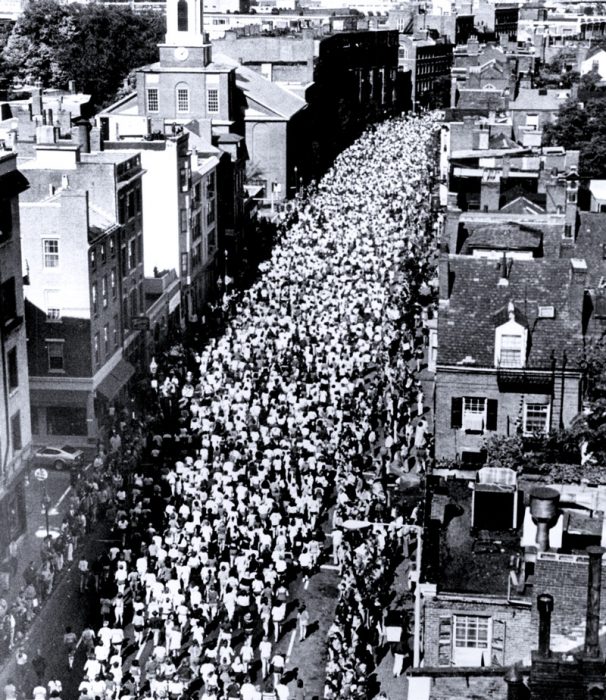Race History
The Boston 10K for Women has its origins in 1977, when it was known as the Bonne Bell Mini Marathon. It was one of a series of 12 races for women that were held across the country.
Although only 200 women had been expected to participate that first year, 2,231 women ran and walked the course that began and ended at the Hyatt Regency in Cambridge. The first race included a series of 17 steps, an unusual feature in a foot race.
Lynn Jennings, then a high school senior, ran neck and neck with Patti Lyons (Catalano), and Lynn won the race in a time of 34:31. Lynn went on to win the race six times (1977, 1989, 1990, 1991, 1992, 1993). Her history with the race also includes five second-place finishes.
In 1978, the race moved to the Boston Common and the course was certified on its present route. The course was recertified each year in the late 1980s due to repairs and restructuring of the Massachusetts Avenue Bridge. In 1984, the start line was also moved from Charles Street to its present location on Beacon Street after the construction of a traffic island caused course interference.
One of the supposed flaws in the course was the double loop on DCR’s Memorial Drive. This was originally included to make up the certified distance of the 10K, but it turned out to be one of the most beloved aspects of the Boston 10K for Women. Women often express their excitement about passing and cheering on the elite runners as they loop past the crowd of runners on DCR’s Memorial Drive. Elite athletes also recognize how this moment can be exhilarating and inspiring.
In addition to the beautiful views of Boston’s city skyline and the Charles River, the course is flat and fast. Over the years, the elite runners who are drawn to the race have set five American records at the course. The race continued to grow in popularity, and in 1983, nearly 9,000 runners and walkers participated.
Tufts Health Plan took up the sponsorship of the race in 1985 and developed the day into a celebration of health and fitness for the whole family. In 2018 and 2019, Reebok held title sponsorship of the race. Today, the race’s festival and expo includes 1K Kids’ Races, pre-race meditation, yoga, and fitness classes, post-race stretch, massage therapy, and more.
Although the number of entrants has waxed and waned with the popularity of women’s running, 1994 marked a resurgence for the race, as the number of women participating began to climb again. In 2000, the Boston 10K for Women again held the title of the largest women’s-only 10K in the nation for the fourth consecutive year, with 6,537 registered runners.
In addition to the runners, the race draws thousands of spectators. These include husbands, boyfriends, fathers, mothers, children, friends, and companions who gather to watch and cheer on the runners and participate in the activities on the Boston Common.
Approximately 100 policemen and policewomen, representing four jurisdictions, assist with this race. The Boston Police, Massachusetts State Police, Cambridge Police, and MIT Police have all shown their support for this race over the years.
The majority of the women who run are dedicated to this particular race. They have run for years with friends, daughters, mothers, sisters, and colleagues and are fully supportive of this tradition. Some of the women have gone on to run marathons, having been inspired by this 10K. Others just run the Boston 10K for Women every year. There are at least eight women who have run the race every year since its inception in 1977.





